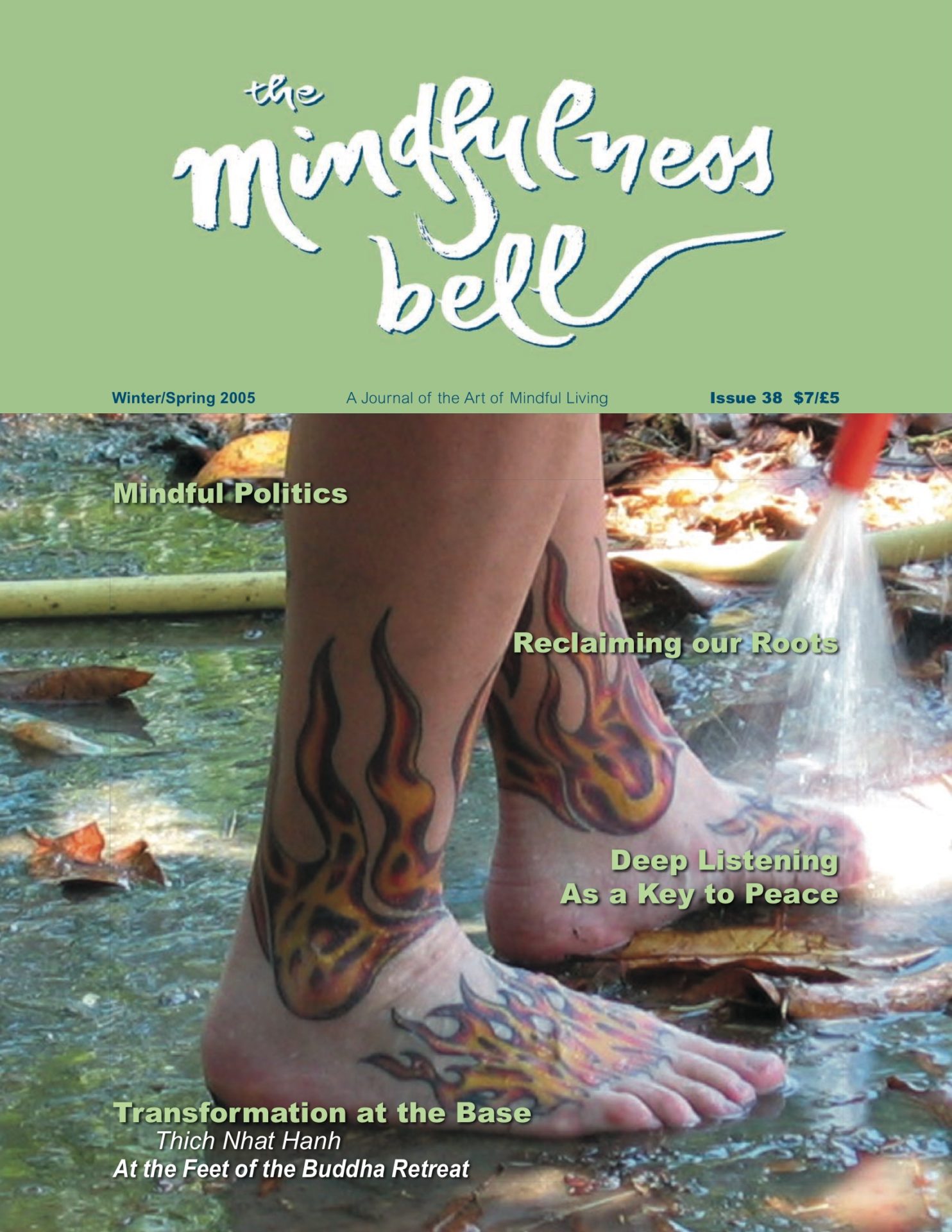Transcending Birth and Death
By Beth Howard

I first heard Thich Nhat Hanh’s teachings on transcending birth and death in August of 2002, while on retreat at the Rocky Mountain Shambhala Center. My father had just been diagnosed with terminal chronic lymphocytic leukemia. I was fortunate to have many months to help my father and to live with these teachings until he died on May 5th,
Transcending Birth and Death
By Beth Howard

I first heard Thich Nhat Hanh’s teachings on transcending birth and death in August of 2002, while on retreat at the Rocky Mountain Shambhala Center. My father had just been diagnosed with terminal chronic lymphocytic leukemia. I was fortunate to have many months to help my father and to live with these teachings until he died on May 5th, 2003. The following September, I attended another retreat with Thay and the teachings really came home to me.
Up early one morning, at the YMCA of the Rockies, I lit a candle and dressed in its small circle of light. Leaving the room, I joined the others in the chilly, pre-dawn darkness, in the parking lot outside the building.
Hundreds were gathered as the monks and nuns began gracefully and wordlessly leading us in mindful movement –– humans moving powerfully, silently like the wind. I could see the power of the practice shifting and sweeping away old paradigms so that new thoughts might take hold and grow. This movement through consciousness is as dramatic as a forest fire destroying old growth. At first, it is the loss that is most obvious, but quite soon the new growth becomes apparent.
The group began walking meditation, moving as a human river, flowing down roads and walkways, pooling into a field for sitting meditation. We faced northeast, embraced and surrounded on all sides by mountains. In this cold darkness, we anticipated the light and warmth of the sun before its arrival, reminding me of the Sanskrit term, anahata, meaning unstruck, as in hearing the sound of the un-struck bell.
In this pre-dawn stillness, my father came to sit with me. I was so warmed by his presence that my eyes filled with tears. I held my left hand with my right hand, imitating how I had held his hand often at the end of his life. I thought, “It’s good to sit with you again.”
He replied, “You know what I remember best about you?”
“Yes,” I answered, “the time I held your hand all night and you felt the life flow back into you.” He’d remembered this to me many times at the end of his life. Only this time, the energy flowed into me, with his presence as the channel. I received deep love and peace, a blessed gift. My heart filled with gratitude for this sweet reunion.
The sky lightened. The group stood and began walking in silence, moving out of the field and into our day. This new energy would carry me back into the fullness of life.
Later that morning, during the Dharma talk, Thay held up his left hand and said, “This is your father’s hand, for your father lives on in you. If you are ever missing your father, hold your left hand with your right hand and know you are holding your father’s hand.”
I was struck by the powerful confirmation of this message so soon after feeling the fullness of my father’s presence.
These are the messages of mindfulness that remain with me: That which is part of you can never be lost. You may, however, have to find and feel it within you. Also, Something can never become nothing. This is the principal teaching of the Buddha in order to overcome fear. The energy of one you have loved remains. The challenge is to look deeply, to be quiet, aware, and willing to find and feel the energy in a new form. Once you discover this, you will begin to understand that you can never lose someone you love. You will only begin to find them again in a new form.

Beth Howard, Living Dharma of the Heart, lives in Cheyenne, Wyoming and practices with the Bird & Bell Meditation Group at the Unitarian Universalist Church of Cheyenne. Beth is an artist, weaver, and yoga teacher and she enjoys writing.

